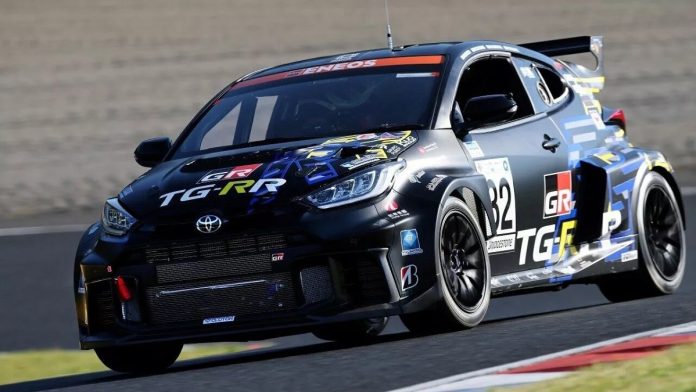Toyota is moving forward with its mid-engined sports car programme, even after early reports suggested the development team had run into major challenges with its GR Yaris M Concept test car. Instead of slowing down, engineers refined the prototype and recently secured a third-place finish in their class in Japan’s Super Taikyu Series, signalling that progress remains steady.
This project has been under development for some time and is widely believed to be the foundation for a new-generation MR2. Until the production model is ready, Toyota is using a heavily modified GR Yaris to test its mid-engine layout, convinced that the setup has the potential to outperform what the current Yaris platform can achieve.

Toyota notes that the GR Yaris’s front-engine, all-wheel-drive configuration places heavy strain on the front tyres, wearing them out roughly three times faster than the rears. Moving the engine to the back while keeping power sent to all four wheels is expected to sharpen handling and help reduce understeer—an advantage that aligns with the goals for a focused sports car.
Mechanical changes are just as significant. The familiar 1.6-litre three-cylinder used in the GR Yaris and GR Corolla has been replaced with Toyota’s developing 2.0-litre turbocharged four-cylinder engine known internally as the G20E. Despite its smaller packaging, the engine already outperforms Toyota’s existing 2.4-litre turbo unit. Toyota says the G20E is 10 per cent smaller in size and height yet delivers considerably more power, making it suitable for everything from heavy-duty applications to performance cars.

Development is ongoing, with an even more compact version of the G20E also being tested for future models, including the long-rumoured Celica revival. Mitsuto Sakai, chief of engine development within Toyota’s ICE Development Department, says the team is focused on achieving high output from a compact package by improving combustion efficiency while reducing overall size.
Toyota initially suggested the G20E would produce around 395 hp, but engineers now believe that with a larger turbocharger, it could deliver up to 600 hp without the need for hybrid assistance. This potential points to a highly adaptable performance engine that may underpin several of Toyota’s future enthusiast-oriented models.








